Table of Contents Show
Bats are the only mammals that are capable of true and sustained flight. Bats belong to the order of Chiroptera species, with their arms adapted as wings.
Bats have a better maneuvering capability than other birds. They fly with long spreading fingers covered with a thin membrane.
Should we be scared of bats hurting us?
Yes and no.
Although their dark color and body structure seems scary, Bats are harmless creatures when it comes to humans. We shouldn’t be worried about any unwanted attacks by them, just like stray dogs.
However, they are a reservoir for various zoonotic viruses (virus that transmits among animals). These viruses may spill over to humans or animals that eat or interact with them. This can lead to various dangerous diseases.
One of those viruses is the rabies virus. Bat bite (difficult to see) or even contact with bat saliva can cause rabies in humans.
Rabid bats are #1 cause of rabies deaths in USA.
Living in close proximity to a huge number of bats is also not advised. These microbes, especially a fungus called histoplasma capsulatum, are found in high concentrations in bat guano. This microbe can also be found in bat guano fertilizer.
Histoplasma capsulatum can may spread and cause respiratory problems, like histoplasmosis, in humans.
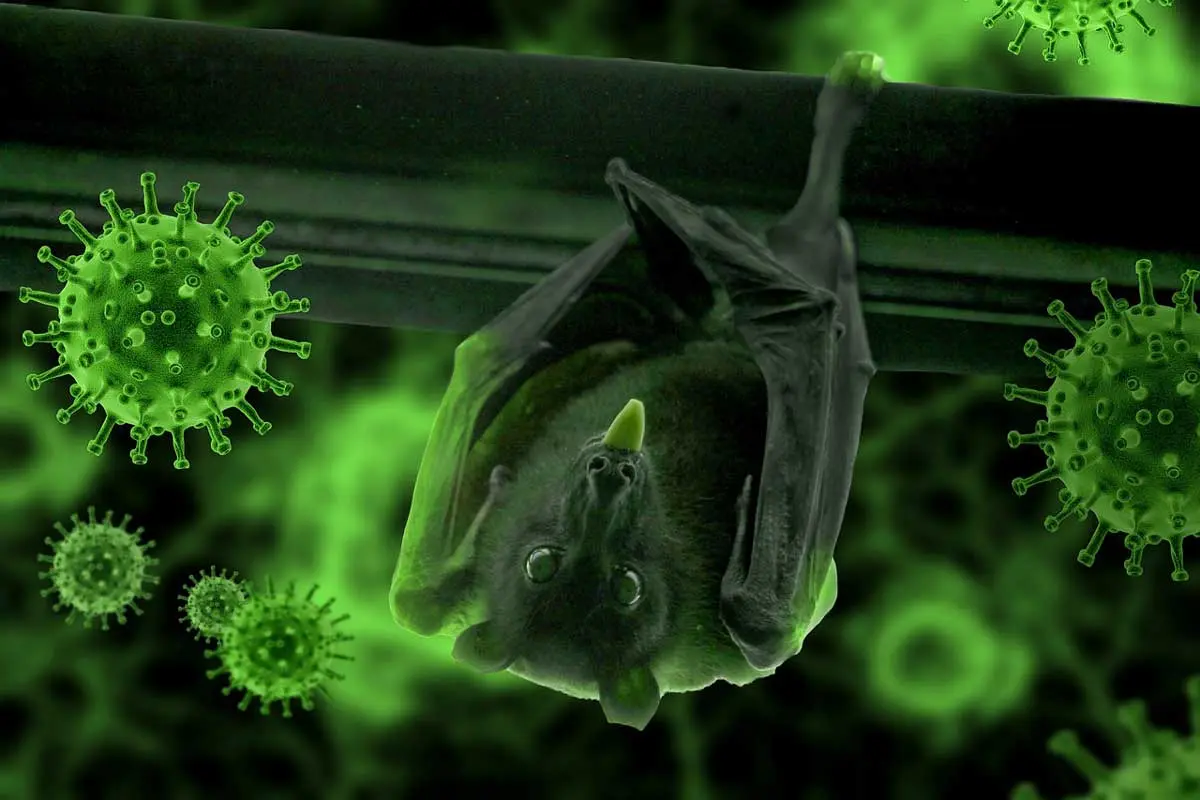
The 2003 SARS outbreak originated from bats. The virus was passed onto civet cats (they are actually mongoose!). Eventually, the virus spread through to humans which caused thousands of cases worldwide, especially in China.
Bats mostly invade our home for a small time. This usually occurs during cold weather; when they get attracted to heated homes and accidentally enter through open windows.
Bats are known to create mess anywhere they live, leaving behind droppings and creating filth all around. Well what can you expect, their animals!
Their strange pungent odor also annoys people living nearby. Bat urine can also damage house flooring, make the floor brittle. All woodwork inside a home becomes susceptible to bat dropping and urine.
It is easy to say they are a nuisance and an unwanted guest in our houses. They have a creepy look and annoy us while their flying around. Sounds of these bats are easily heard, which irritates the people living nearby.
Even though it seems they are very filthy creatures, that isn’t true. The diseases they carry, bat feces, bat urine, and creepy sounds of bat activity make them unwanted in our homes.
This is why we have created a small eco-friendly list of home remedies for bat removal from your households and enjoy a bat-free living.
Types of Bats you might see in your house
Before you head on to remove bats from your home, you should know a bit about different bat species you’ll find in your bat colony. You’ll definitely find one of these if you’re living in United States.
Big Brown Bat
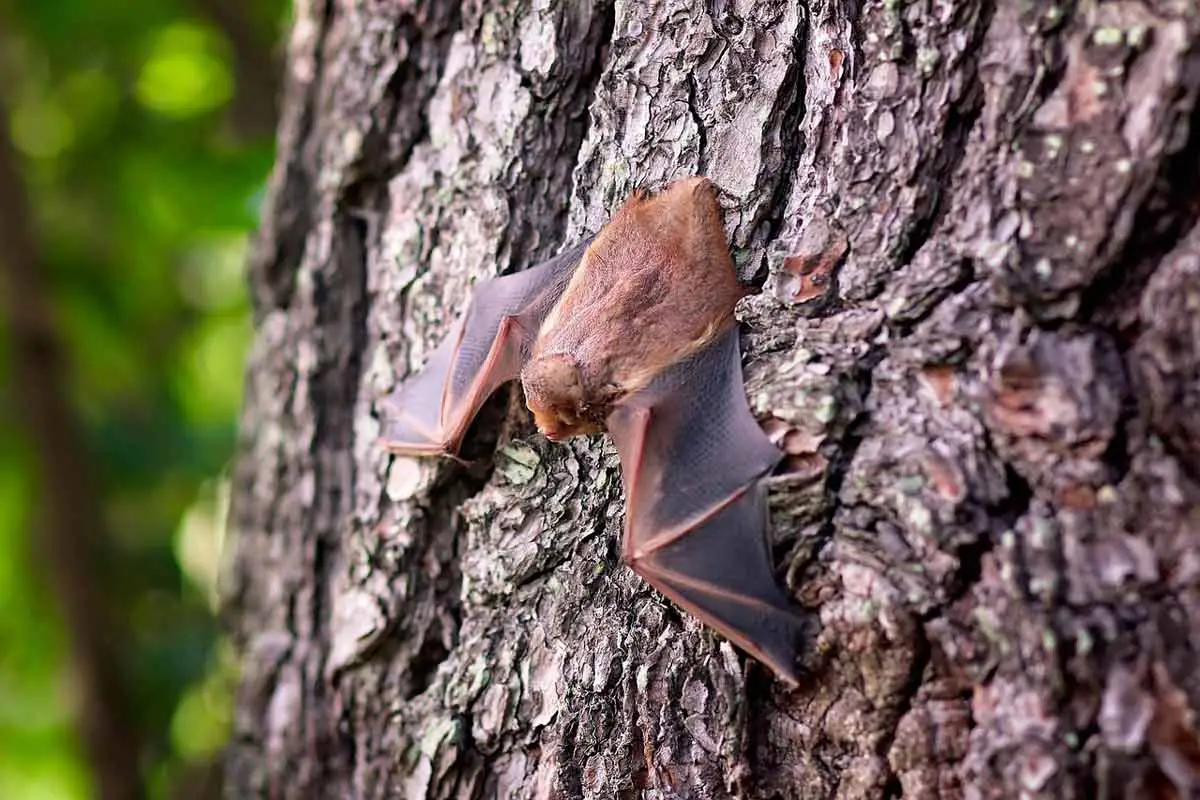
Big brown bats are spread throughout US and Canada. A good-sized bat colony will only contain 10-12 big brown bats.
Big brown bats have a large brown body fur with black wings. Big brown bat is a common guest of attic spaces in your house.
Little Brown Bat
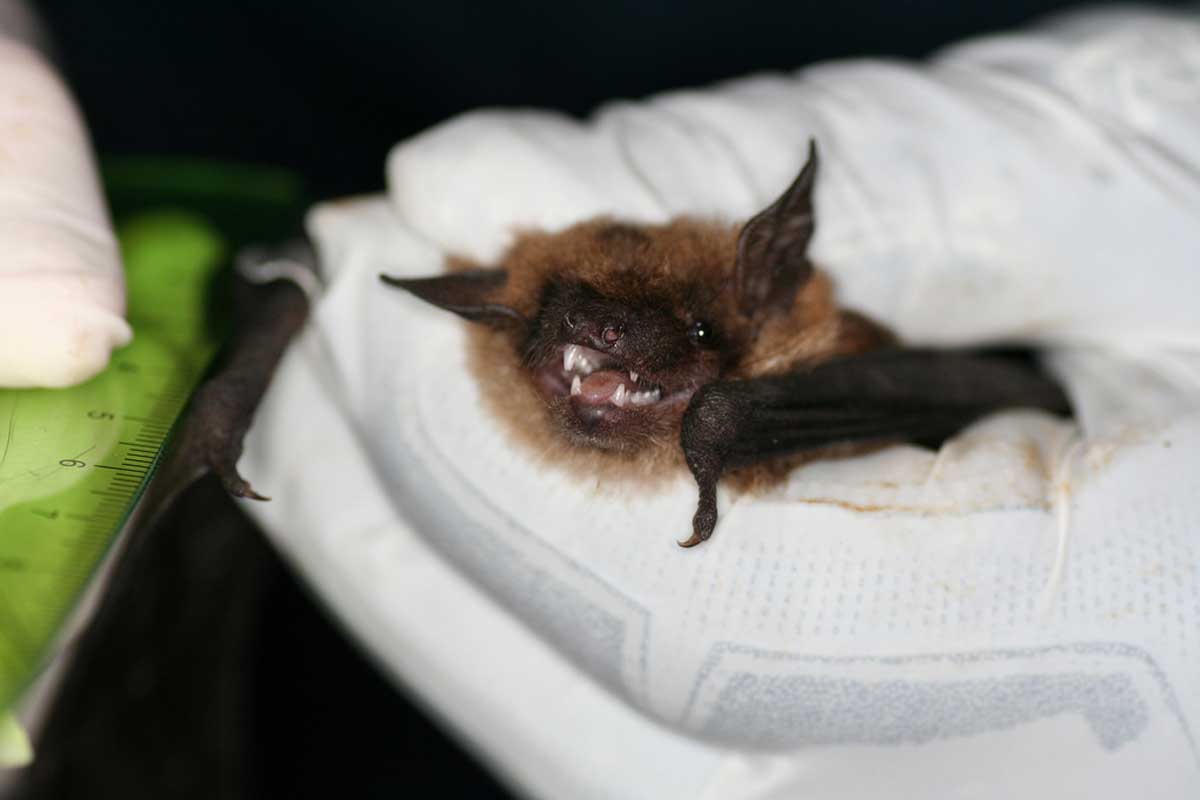
Little brown bat likes to stay up in Canada and some parts of Northern US. They’re pretty small, almost 4 inches in height. That’s about the size of your thumb.
An average colony can have as many as 200 little brown bats!
Mexican Free-tailed bats
Mexican Free-tailed bats are found South, West and Southwestern parts of America.
These bats are even smaller, with a colony consisting of thousands of bats!
These bats are red-brown in color and have ears that point forwards. They are called free-tailed because their tail extends a third more than their tail membranes.
P.S: You might also find a bat bug or two when there’s a bat infestation in your home. Bat bugs can bite humans but mainly feed on bats. Hence, bat bugs are a definite sign of bats in your home. I had bat bugs coming down the chimney!
Here’s a video of Bat bugs in a home.
15 Eco-Friendly Ways on How To Get Rid Of Bats
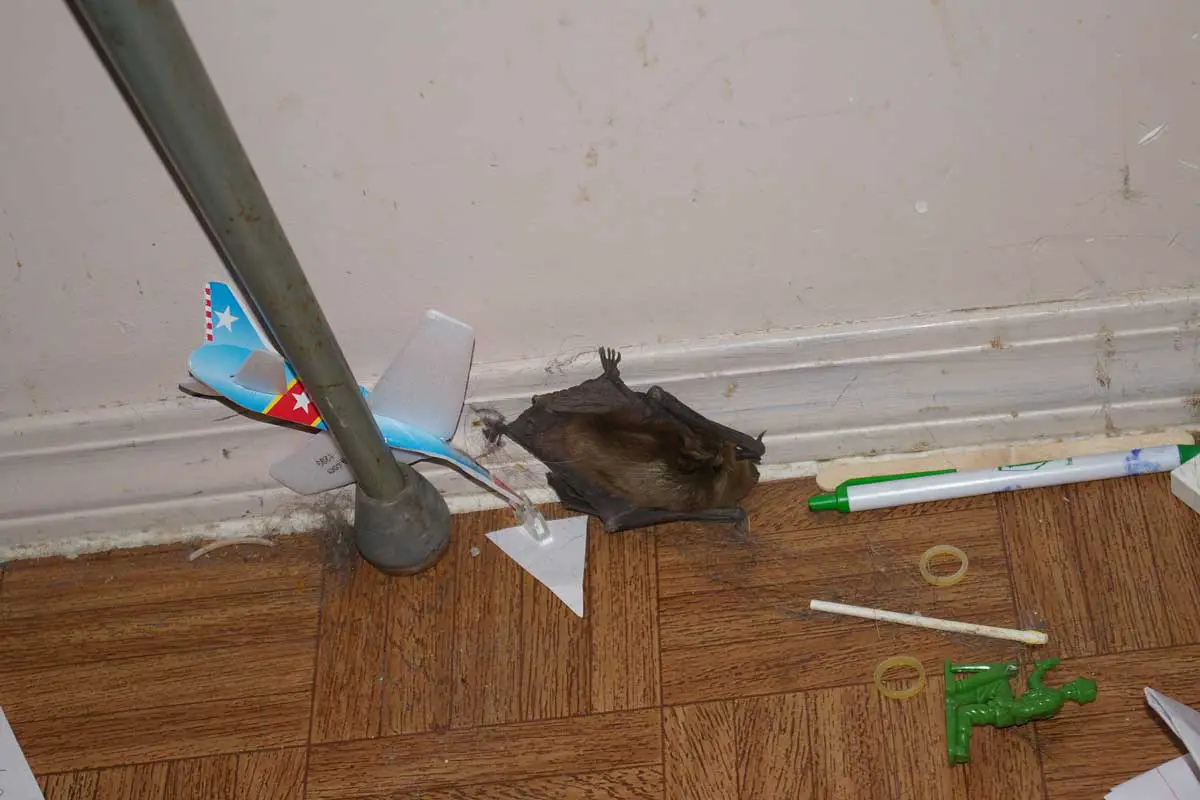
Last year, a number of bats entered the attic of my house. It was a crazy ride chasing them out. Then I had to make sure they don’t come back again. This allowed me to learn about all methods to chase away bats. This motivated me to make an eco-friendly guide for getting rid of bats!
1. Sealants
Observe the entry and exit points of the bats.
Once you remove them from their nest, or they fly away naturally, you don’t want them coming back. As they leave, seal the point of entry so they can’t.
This method may require a variety of materials depending upon the location of the hole.
You may require shingles, plaster, caulk, wood, or even brand new windowpanes.
To be completely sure, hire a contractor to do a full inspection of your home. This so that you can rest assured that you used the best materials for the job and covered ALL entry points.
2. Repair Home Walls

The most common points of entrance are doors and walls. Walls may have small holes that make it very easy for the bats to invade your privacy.
A 1 or 2-inch hole is enough for bats to enter your house and create a mess. If you find these openings in your house, it is necessary to repair the walls as soon as possible and seal the place.
For a short time solution, if you are feeling lazy and want a quick fix, use rock insulations (stone wool) to seal the points of entry. However, this is a temporary fix.
For an even quicker fix for the night, just find an old cloth and tightly stick it into the creek/hole in the wall. Get as much as you can in there to tightly seal it.
3. Mothballs
Mothballs or Naphthalene balls are one of the best ways to get rid of bats.
They make sure bats will never enter your home again. You’ll be happy to know that mothballs are commonly available in pest control shops and stores at affordable prices.
It is very easy to use these mothballs. Just tie them together in fine hardware cloth and hang the fabric in your house. It is advised that these are strategically placed in an area with good ventilation.
Place 2 mothballs into a hardware cloth, tighten it with a string, and hang it in the corner of your room. This moth ball bag will slowly release a strong chemical smell into room air, repelling bats away.
Avoid placing large quantities of mothballs as they can be a health risk for you. Additionally, you might end up with a dead bat in your home that you’ll have to clean up.
For e.g. One moth ball should be enough if you only have a single bat infestation.
Throw a couple mothballs into the attic and just wait it out, they’ll be gone in a few hours!
4. Mylar Balloons

Mylar balloons are the most creative ways for bat control. Once you see bats leaving your place, immediately start hanging these Mylar balloons.
These are helium-filled balloons and their continuous motion scares the bats away. Shiny balloons are more preferable.
Once you’ve hanged these balloons out on the porch, it is likely the bats will never return to their roosting ground.
There’s a drag! You need to fill these Mylar balloons up with helium.
P.S: Read up on my guide to Eco-friendly balloons.
5. Aerosol Repellant Sprays
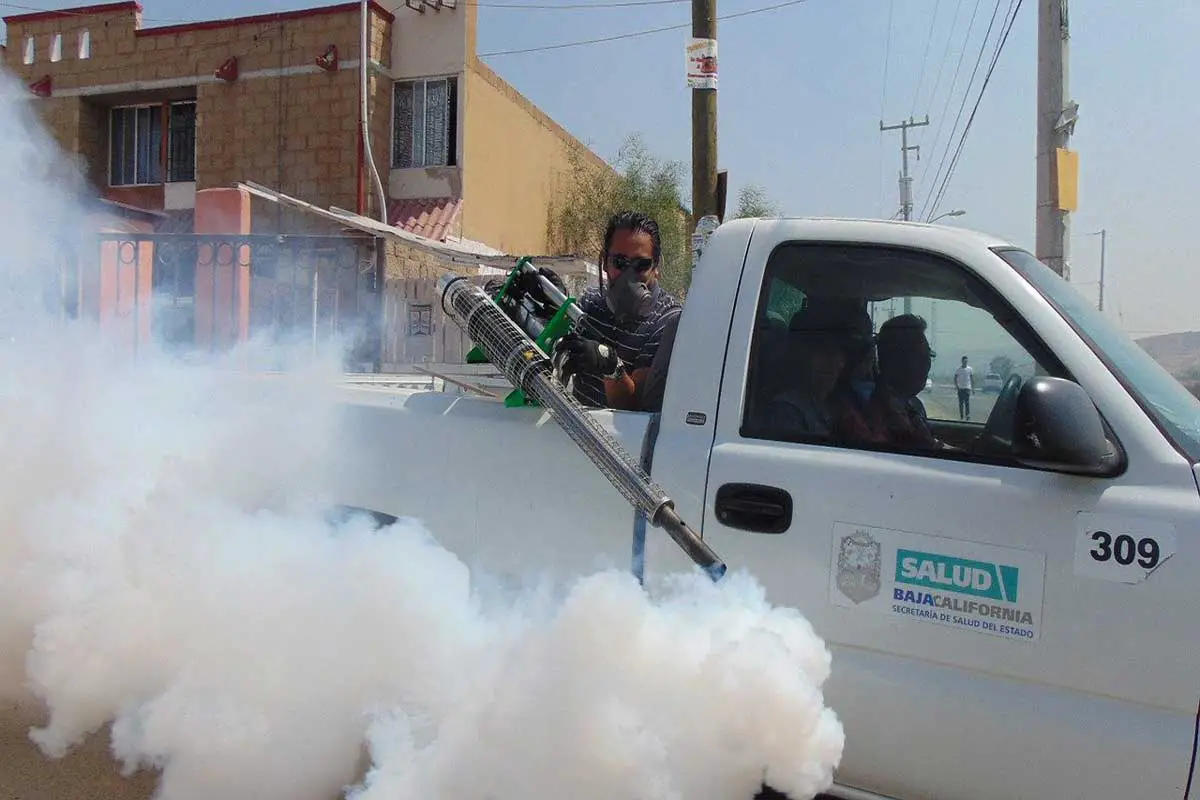
You can get aerosol bat repellents in pest-control stores nearby your houses. You can find them in the chemical section of a supermarket as well.
Simply buy these repellents and regularly spray them where the bats are living. Soon, they will leave and find another place to live in.
These sprays irritate bats just like they irritate you. These aerosol sprays do NOT kill bats, just fly them away effectively.
Some communities also spray repellants in neighborhoods to keep bats away. [Featured Image]
6. Phenol
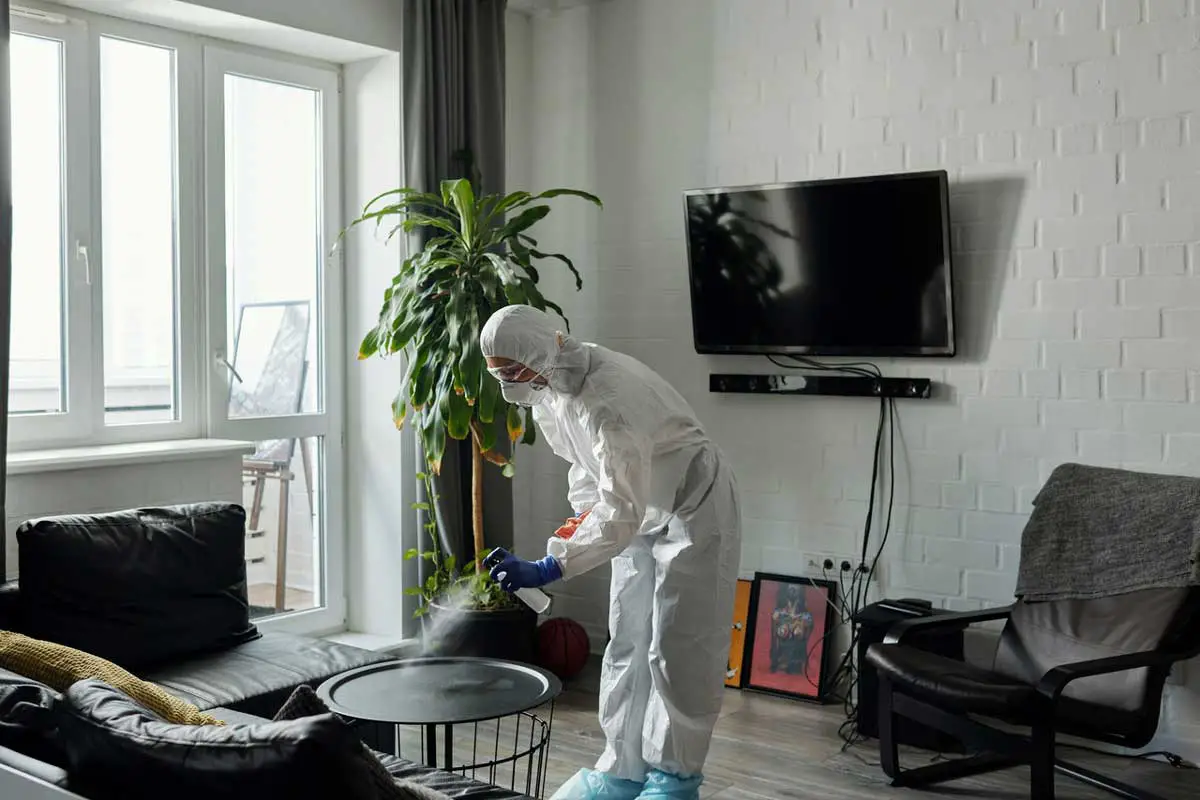
Phenol is also an effective way to make your house bat-free. Using phenol as cleaning chemical should clears out your home from all germs, insects and keeps other animals away.
Please use phenol in a limited manner. You can use this Eco-friendly cleaning guide as an alternative.
The smell of phenol around your home makes the place very unpleasant and unbearable for bats to reside in. Your home becomes an irritating place for them, leaving them no choice but to leave.
The best recommendation is white phenol. Mix It with water to avoid allergies.
Use a normal spraying bottle and sprinkle the mixture all over the place, especially where you found the bats.
Keep spraying phenol until the odor is strong enough to cause the bats to finally give in and leave.
7. Water Spray

This is one of the least painful and more peaceful methods to drive bats away. People usually have methods that may physically harm or even kill the bats.
Bats hate water! Simple as that.
You just need to spray water in their nests when they sleep (During mornings). If you keep on doing this, they will never come back.
8. Hang Aluminum foil
It is also another efficient method just like the previously mentioned Mylar balloons. This is the cheapest methods amongst all others.
Bats hate light; Aluminum foil reflects more light off its surface.
You just need to hang these aluminum foils and they will reflect light, keeping bats annoyed and irritated.
If aluminum foil balls are kept closer to each other, they will bump into one another and create a strange noise that irritates them.
P.S: Aluminum is 100% recyclable! You can also read more about Aluminum Recycling.
9. Mirrors
This is another peaceful way to get rid of bats. It uses a combination of light and mirror.
This is, however, a very expensive method and requires a good amount of ambient home lighting to work.
You need to light up your room during the day (while the bats are sleeping). This will effectively cause repression of all bats living at your place.
Before you use mirrors, remember that bats mistake mirrors as clear flight paths. They’ll be more likely to hit mirrors as they fly off. If you overdo the use of mirrors, you might end up with an injured bat on your hands.
10. Christmas Decoration
If you haven’t thrown out your Christmas decorations yet, you’re gonna need them!
Decoration for Christmas is a way to repel bats and never see them coming back to your house again.
This is recommended for someone who wants to get rid of bats without spending money.
They just need Christmas decorations to repel the bats. The huge décor and shining of Christmas trees will frighten the bats from entering your home.
11. Bat Proofing
This is a method that also prevents entry of bats. Bat-proofing NEEDS to be done before April. This is to ensure there are no bats inside the house when you seal it.
P.S: Maternity season of bats starts beyond mid-May.
12. Bat Exclusion
Bat exclusion involves covering those entry points with netting. This netting is shaped such that bats cannot enter but only exit.
New bats can’t come in; members of bat infestation already inside will want to get out. When they do, the netting will guide them to a point of no return.
If they are in your attic, you can place the bat exclusion netting over the attic vent (externally).
If there is no gable vent in your attic and you’ve found a hole from where bats came in; you can fit a bat cone in that hole. The bat cone works as a bat excluder, just like the netting.
13. Bat Box / Bat House

Constructing a bat box and placing it in your backyard can give bats a resting place. This was they are attracted to the bat box rather than entering your home.
Naturally, most bats look out for making a bat colony in caves, abandoned wells and buildings as well as under bridges. It is in these small spaces where a female bat gets the chance to give birth to a baby bat.
Building a small bat house in your backyard can go a long way to protect bat species, as they have perfect roosting (breeding) conditions.
Because bats are sneaky predators, you may not notice how they take care of night-flying insects in your backyard. They’re a natural pest control method. Some farmers even attract bat species for integrated pest management.
There are 2 types of Bat House;
- Traditional 4-chamber bat house
- Rocket Boxes
After buying or building your bat house, you NEED to attach it on buildings or any wooden and concrete structures. These bat homes should be placed at least 10 feet off the ground (Ideally 12-20ft)!
Installing a bat house doesn’t mean they will come instantly. Give them some time. Additionally, you can place bat guano or food lures to attract them into the bat box. Do place guano in the bat box if you’re trying to pull the bats out of your house into the box. Success rate of a bat house lingers around 35%.
P.S: Before you head over to the store and ask for bat guano, you should know that this is bat feces. You’re likely to find it in the form of organic bat guano fertilizer.
It’s advisable to keep checking the box every now and then, for upkeep and getting rid of bat bugs.
14. Eucalyptus
Eucalyptus can be used, not only as bat repellent, but also as an insect repellent. The odor of the oil will extremely annoy the bats, forcing them to leave the place.
This is a proven organic method of bat removal which quickly shows results.
15. Cinnamon

It is well known that Cinnamon is a well-known repellent poison for bat. If you hate the odor of eucalyptus, you can find a much more friendly solution such as cinnamon.
Fact: Bats hate the smell of eucalyptus more than cinnamon.
Hence, you will need to spray cinnamon a couple of times to get rid of the bats. It is also best to use cinnamon in powder form.
You can spread the powder in the nest. Bats will instantly fly!
Which bats are protected species?
It is definitely wrong, sometimes illegal, to physically harm or poison bats that are roosting (breeding) in your home. After all, they’re just like another animal.
8 protected species of bats are on the Federal endangered species list. Most of these endangered bats do not make their way into your home. However, it’s also difficult for one to know if they have a little brown bat colony or endangered Indiana bats colony living in their home.
Sometimes you can have a mixture of the two!
Hence, it’s always better to call in bat removal experts to take care of your bat problem. They should be able to distinguish one species from another.






